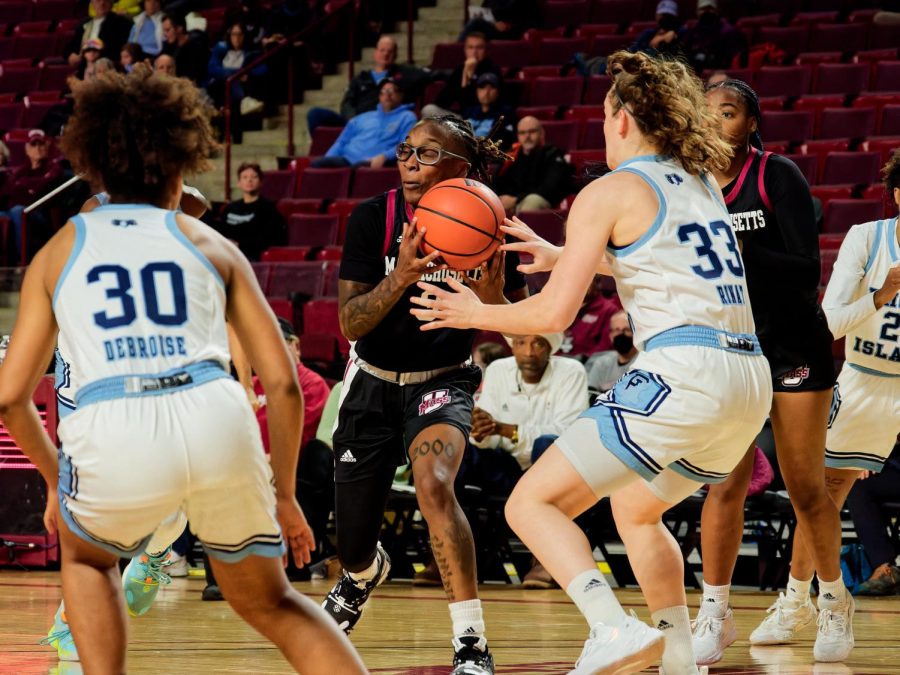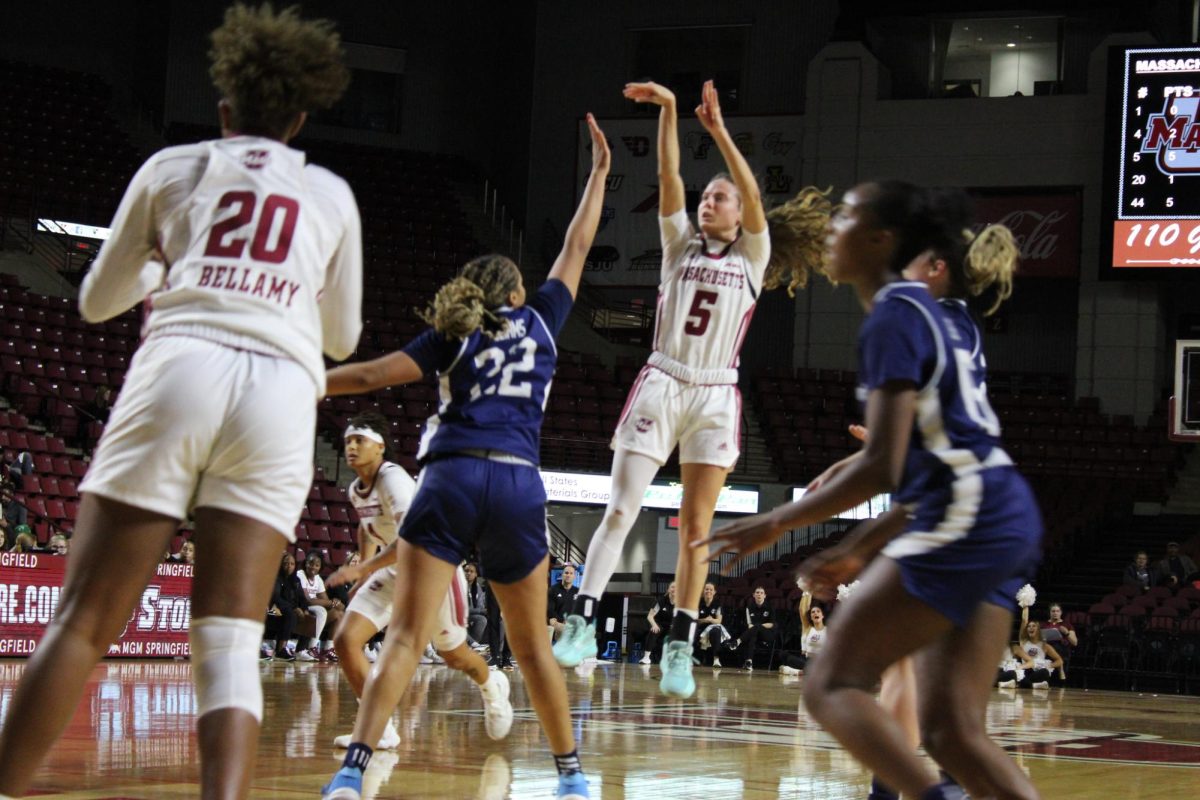In a game in which the Massachusetts women’s basketball team won by nine points, a four point lead at the end of the first quarter seems almost meaningless in the grand scheme of things. After all, UMass (14-4, 4-1 Atlantic 10) has repeatedly pulled away from its opponents or have at least fought tooth and nail to the final buzzer, most recently against Saint Joseph’s.
The final box score doesn’t tell the whole story of Wednesday’s game, however; Fordham had a one-point lead just about halfway through the fourth quarter. If the Minutewomen hadn’t opened up their four point advantage after the first frame, the Rams’ (12-7, 4-2 A-10) lead could have been much larger. In fact, this game could have been drastically different at halftime if not for the early UMass advantage.
In last Saturday’s contest, the Minutewomen shot 29.41 percent from the floor in the first quarter, while allowing 17 points from the opposition. On Wednesday, they didn’t shoot much better in the first, shooting 5-of-15. The difference? UMass allowed almost half as many points as it did on Saturday, only nine.
The Minutewomen don’t need to come out guns blazing on the offensive side of the floor every night to start the game strong, and they showed that on Wednesday. Their identity is rooted in defense, with Destiney Philoxy in particular willing to literally put her body on the line if she thinks it will help her team.
It doesn’t seem as though the slow starts on the offensive side of the basketball are going to stop anytime soon, as the 5-of-15 shooting showcased in Wednesday’s contest was the highest mark from the floor since conference play began on Dec. 31. In five games, if the highest efficiency is 33.3 percent, in a quarter where UMass scored 12 points, it doesn’t seem as though this is a cold streak that will just go away.
The average percentage from the field across the five first quarters that the Minutewomen have played since conference play began sits at a meager 27.7 percent. So far at least, these slow starts haven’t plagued them as much as they should. Shooting under 30 percent from the field is never a recipe for success, but UMass has fought through this shortcoming, only losing one of its five A-10 contests. But as the season goes on, things begin to change and fatigue begins to set in.
In the 2021-2022 season, the Minutewomen closed out their regular season with a win against Saint Louis. In that game, they closed out the first quarter with a lead that they never relinquished, which proved to be vital as St. Louis kept pace with them the rest of the way. UMass shot 42.9 percent from the field in the 12 point win. Compare that to a mid-January victory over VCU in which the Minutewomen fell behind early and had to scratch and claw their way to a win, as they took a five point deficit into half-time. They would ultimately come away with a 12 point win.
What can be learned from these two games that happened last season? For one, it shows how games that end with the same margin of victory can have a dramatically different tone throughout. Secondly, it shows that the energy to make late game runs to pull away or take the lead might be there in the middle of January, but become much more difficult after the season has taken its toll on the body.
Is UMass doomed if it doesn’t have a first quarter lead? No. The Minutewomen have the talent to hang with anyone in the A-10, regardless what the score is after the first 10 minutes. But for the longevity of this squad, leads after the first quarter are essential.
Johnny Depin can be reached at [email protected] and followed on Twitter @Jdepin101.




















